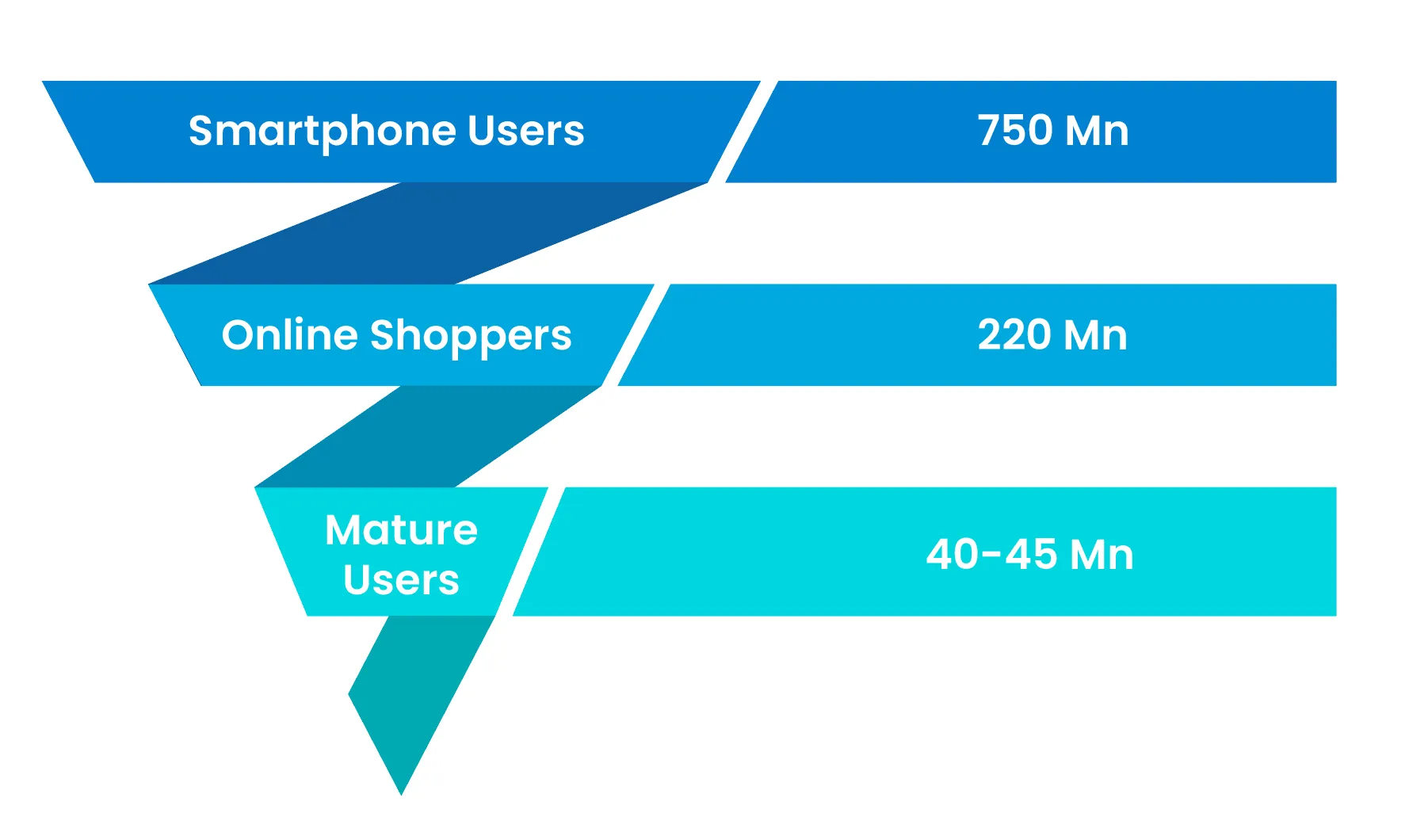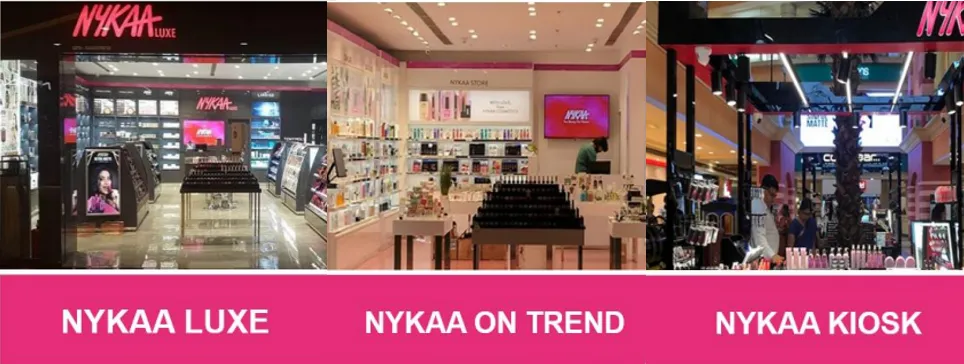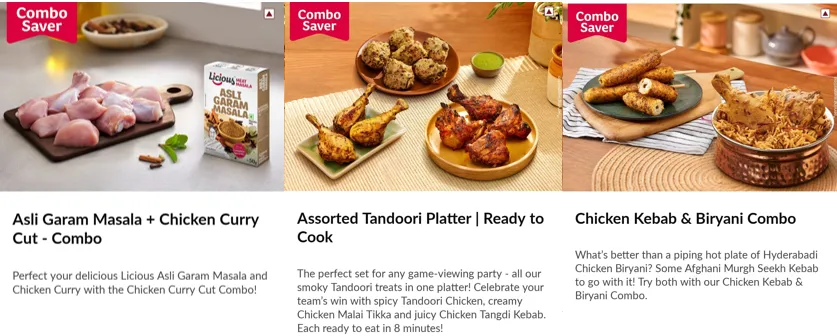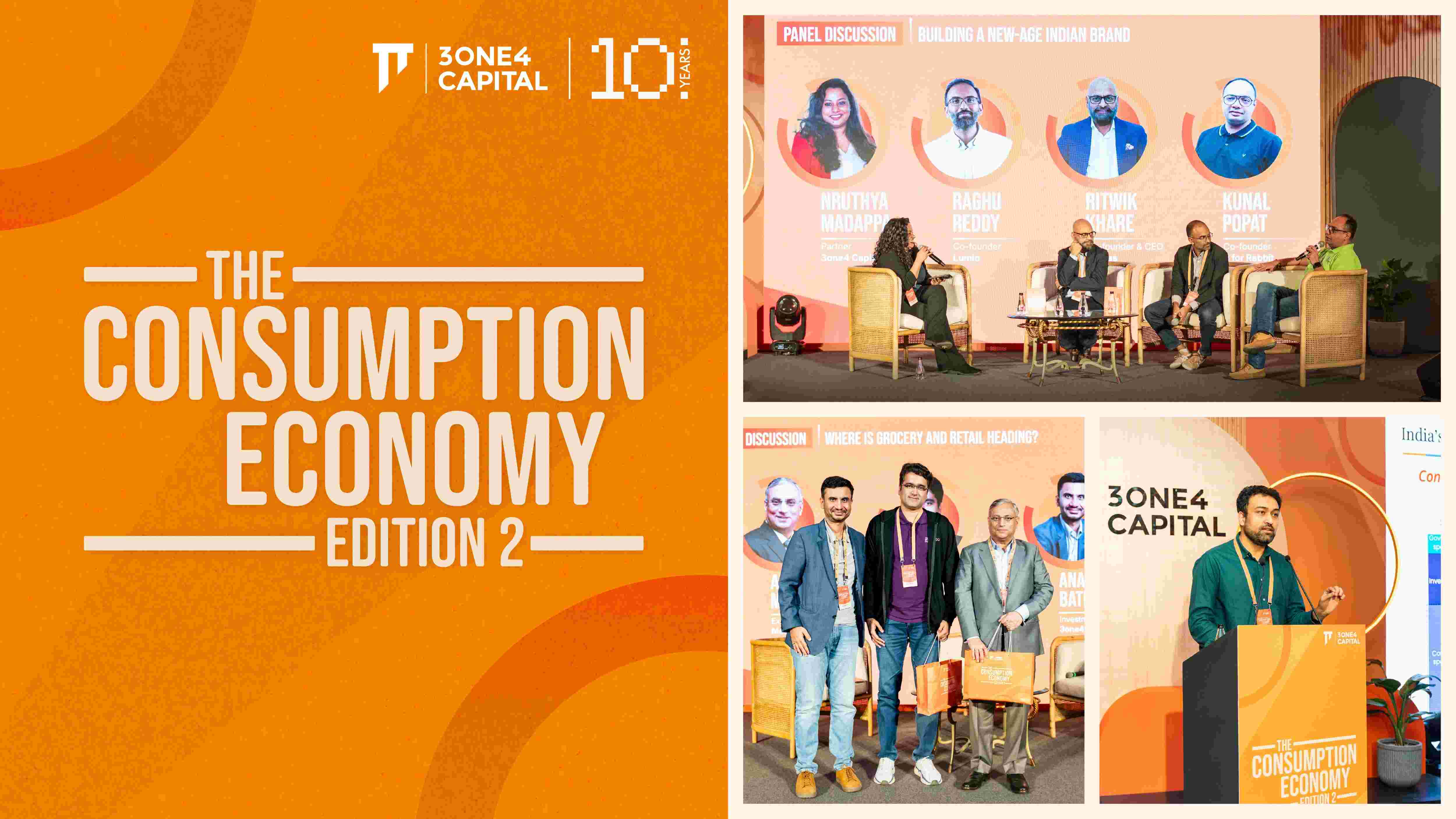
The India Funnel: Insights on Customer Awareness, Consideration, and Conversion
India's recent growth and development presents a unique opportunity for business, supported by favourable national demographics that underpin a decidedly well-placed optimism. A majority of the populace still resides across towns, villages, and cities with a population under 1 million, which is accompanied by a burgeoning proportion of mid-tier households earning between 2.5 lakhs to 10 lakhs annually. This must be viewed in conjunction with the fact that over 60% of e-commerce transactions and a majority of new shoppers are expected to emerge from tier-2 cities and beyond, considering a higher growth in per capita income for rural India (4.3x) in comparison to urban (3.5x) between 2019 and 2030.
It is here that the discussion about the ‘India funnel’ gains prominence. Despite the approximately 750 million smartphone users in the nation, only a mere 220 million are engaged in online shopping, of which only 40 - 45 million can be classified as ‘mature’, spending over 50% of their budgets online.

Therefore, the opportunities housed in the expansive nature of the ‘India funnel’ could be most conveniently addressed by mapping the imperatives that remain at the disposal of individual brands to optimise their own customer funnels.
Top of the Funnel: Customer Awareness
The initial tier of any brand funnel involves introducing customers to the company’s ecosystem, with a focus on initiating an initial interaction. The strategies, in this regard, are aimed at creating a more immersive experience for the customer. The primary imperative, thereby, stems from the brand’s need to maximise the extent of its online presence, which can most suitably be addressed by traditional brand-building initiatives, to solidify its presence in the minds of the customers, in addition to the use of influencer and performance marketing activities.
Nonetheless, considering the huge influx of offerings across consumer categories, companies, irrespective of the effectiveness of their product propositions, are faced with the challenge of differentiating their offerings from the gamut of alternatives. Therefore, efforts to enhance the recognition and resonance of the customers with the brand, its philosophy, and the values it espouses become highly important. It is here that community-building becomes an enticing option for brands.
Ideally, community development efforts should precede brand development, by serving as a funnel for engaging enthusiasts and aficionados of the product category and leveraging their feedback for product development and further customer acquisition. Ather’s initiatives in community-building serve as a testament to the power of early community-building.

Furthermore, post the pandemic, consumer preferences have steadily shifted towards hybrid or omnichannel modes of discovery and fulfilment, prompting brands to reconsider their distribution channel strategies. This expansion into offline modes can be achieved either through the establishment of proprietary outlets or by adopting a 'shelf-in-shop' approach, leveraging general and modern trade alternatives.
Considering the former proposition, offline touchpoints can be used to provide an experiential interface for the customers to interact with the brand’s ecosystem. Variations in the purpose and nature of such touchpoints, nonetheless, house an exciting opportunity for efficient growth, as clearly evident from Nykaa’s offline expansion strategy highlighted in its DRHP (Page 205), stipulating a distinction between its full-fledged ‘Luxe’ stores, the selectively curated ‘On-Trend’ stores and private label ‘Kiosk’ stores.

Bifurcation of setups in a manner similar to this helps induce cost efficiencies through well-planned expenditure on leases, personnel, and stocks/working capital, whilst ensuring a more consolidated expansion strategy.
As for brands for whom first-hand offline expansion is unfeasible, avenues of general trade and modern trade still contain an exciting opportunity for expanding presence after giving due consideration, of course, to risks concerning dilution of brand image, retention of suitable shelf presence, among others.
Mid-Funnel: Consideration
In addition to ensuring brand awareness among potential customers, it also becomes imperative to explore the strategies that facilitate active consideration from their end towards the brand’s proposition. Some notable avenues include:
Content: In tandem with the aforementioned community-building efforts, regular content pieces help strengthen the brand’s identity and image in the minds of discerning customers. The strategy, in this regard, must revolve around educating the customers about the brand’s vision and purpose, whilst organically encouraging them to progress down the funnel, without resorting to hard-selling pitches. This can be effectively undertaken through targeted e-mail marketing campaigns and a variety of initiatives on the brand’s website such as informative blogs, customer reviews, and case studies among other things.
Addressing Distinct Needs: Given the inherent limitation on the number of SKUs brands can offer their customers, it becomes important to create distinct propositions from the constrained set of products, which can address various customer needs and use-cases.
Thereby, bundling, becomes an enticing option for structuring tangible product offerings, especially when implemented through a ‘modular’ approach, wherein multiple individual offerings by the entity could be aggregated across different combinations to address specific customer requirements and, of course, entail discounts for the user.

From the company’s perspective, bundled offerings also serve as an effective go-to-market strategy for introducing new product categories, by aggregating them with star products and positioning them at a discount.
As for digital offerings, subscriptions expectedly emerge as a lucrative measure for disbursing value propositions, which can be further nuanced by leveraging 'usage' and/or the 'extent of convenience entailed' as metrics to structure offerings. This can be best explained by considering the case of Kuku FM, which offers multiple alternatives to its customers by varying the caps on the number of devices and providing access to premium features.

Moreover, the merits of subscriptions and bundling could be accentuated when coupled with measures to address upselling and cross-selling across offerings and categories, say through the prescription of order value thresholds to unlock discounts or free shipping, among others.
Bottom of the Funnel: Conversions
Lastly, it also becomes essential to ensure that all these efforts translate to eventual customer conversions. This can be viewed from two perspectives - augmenting the customers’ online interaction experience, and minimising leakages in the form of cart abandonment.
With respect to the former suggestion, it becomes worthwhile to explore the emerging trend of ‘gamification’ of digital experiences to enhance the longevity and quality of time spent by customers on the platform. Taking into account the various initiatives that could be undertaken in this regard, it is important to note that the primary purpose of such activities should be to drive engagement, retention, and monetization for the brand. As an example, Kapiva offers its customers the ability to avail customised health plans and product recommendations through interactive questionnaires.

Additionally, in order to address the challenges associated with the high rate of cart abandonment in e-commerce, which currently stands at nearly 80%, the focus inevitably shifts to tackling factors that impede the successful completion of a purchase. Some noteworthy considerations include:
Unclear Terms and Charges: A high degree of ambiguity in charges or fulfilment terms associated with an order diminishes the extent of trust customers associate with a brand and expectedly discourages them from considering the brand in the future. With as many as 47% of shoppers abandoning their carts owing to the ‘sticker shock’ associated with the high added costs on the checkout page, and nearly 17% exiting due to their inability to ascertain total costs upfront, brands must make it a priority to be explicit yet concise about the factors related to the sale.
Extensive Onboarding and Checkout: Despite the importance of collecting customer data and maximising registrations on platforms, it is essential to note that as many as 25% of customers abandon their carts when asked to create accounts, with another 16% being dissuaded by long and complicated checkout processes. As an alternative, brands could consider enabling guest checkouts, facilitating log-ins through social media accounts, and having less tedious registration processes.
Addressing such concerns, which might seem inconsequential from a ‘big-picture’ perspective, can nonetheless be crucial in ensuring smooth and regular conversions.
In conclusion, the strategies outlined provide a comprehensive framework for brands to optimise the different tiers and layers of their customer journey funnel. By embracing a multi-faceted approach that includes offline expansion, innovative propositions, and a redressal of common challenges like cart abandonment, brands can position themselves for sustained growth in the expansive consumer landscape of India.
DISCLAIMER
The views expressed herein are those of the author as of the publication date and are subject to change without notice. Neither the author nor any of the entities under the 3one4 Capital Group have any obligation to update the content. This publications are for informational and educational purposes only and should not be construed as providing any advisory service (including financial, regulatory, or legal). It does not constitute an offer to sell or a solicitation to buy any securities or related financial instruments in any jurisdiction. Readers should perform their own due diligence and consult with relevant advisors before taking any decisions. Any reliance on the information herein is at the reader's own risk, and 3one4 Capital Group assumes no liability for any such reliance.Certain information is based on third-party sources believed to be reliable, but neither the author nor 3one4 Capital Group guarantees its accuracy, recency or completeness. There has been no independent verification of such information or the assumptions on which such information is based, unless expressly mentioned otherwise. References to specific companies, securities, or investment strategies are not endorsements. Unauthorized reproduction, distribution, or use of this document, in whole or in part, is prohibited without prior written consent from the author and/or the 3one4 Capital Group.



.png)










